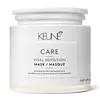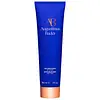What's inside
What's inside
 Key Ingredients
Key Ingredients

 Benefits
Benefits

 Concerns
Concerns

 Ingredients Side-by-side
Ingredients Side-by-side

Water
Skin ConditioningCetearyl Alcohol
EmollientBehentrimonium Methosulfate
Glycerin
HumectantOctyldodecanol
EmollientCetrimonium Chloride
AntimicrobialAmodimethicone
Hydrolyzed Wheat Protein
Skin ConditioningSodium Benzoate
MaskingHydrolyzed Vegetable Protein Pg-Propyl Silanetriol
Skin ConditioningLactic Acid
BufferingParfum
MaskingPropylene Glycol
HumectantTrideceth-12
EmulsifyingPhenoxyethanol
PreservativeBenzoic Acid
MaskingPotassium Sorbate
PreservativeSaccharomyces/Magnesium Ferment
Saccharomyces/Iron Ferment
Skin ConditioningSaccharomyces/Zinc Ferment
Skin ConditioningSaccharomyces/Copper Ferment
Skin ConditioningSaccharomyces/Silicon Ferment
Skin ConditioningCI 14700
Cosmetic ColorantCI 19140
Cosmetic ColorantLimonene
PerfumingLinalool
PerfumingWater, Cetearyl Alcohol, Behentrimonium Methosulfate, Glycerin, Octyldodecanol, Cetrimonium Chloride, Amodimethicone, Hydrolyzed Wheat Protein, Sodium Benzoate, Hydrolyzed Vegetable Protein Pg-Propyl Silanetriol, Lactic Acid, Parfum, Propylene Glycol, Trideceth-12, Phenoxyethanol, Benzoic Acid, Potassium Sorbate, Saccharomyces/Magnesium Ferment, Saccharomyces/Iron Ferment, Saccharomyces/Zinc Ferment, Saccharomyces/Copper Ferment, Saccharomyces/Silicon Ferment, CI 14700, CI 19140, Limonene, Linalool
Water
Skin ConditioningDistearoylethyl Dimonium Chloride
Cetearyl Alcohol
EmollientGlycerin
HumectantErythritol
HumectantPanthenol
Skin ConditioningCetyl Alcohol
EmollientRicinus Communis Seed Oil
MaskingSaccharide Isomerate
HumectantPotassium Sorbate
PreservativeCitric Acid
BufferingCocos Nucifera Oil
MaskingHydrolyzed Vegetable Protein
Skin ConditioningAvena Sativa Kernel Oil
Skin ConditioningPunica Granatum Seed Oil
EmollientSodium Benzoate
MaskingSodium Phytate
Maltodextrin
AbsorbentHydrolyzed Rice Protein
Skin ConditioningSodium Hydroxide
BufferingLepidium Meyenii Root Extract
Skin ConditioningNasturtium Officinale Extract
PerfumingTropaeolum Majus Extract
AntimicrobialCamellia Sinensis Leaf Extract
AntimicrobialHydrogenated Lecithin
EmulsifyingTocopheryl Acetate
AntioxidantXanthan Gum
EmulsifyingSodium Citrate
BufferingTocopherol
AntioxidantSorbic Acid
PreservativeAlanyl Glutamine
HumectantArginine
MaskingOligopeptide-177
Sodium Chloride
MaskingPhenylalanine
MaskingSisymbrium Irio Seed Oil
MaskingWater, Distearoylethyl Dimonium Chloride, Cetearyl Alcohol, Glycerin, Erythritol, Panthenol, Cetyl Alcohol, Ricinus Communis Seed Oil, Saccharide Isomerate, Potassium Sorbate, Citric Acid, Cocos Nucifera Oil, Hydrolyzed Vegetable Protein, Avena Sativa Kernel Oil, Punica Granatum Seed Oil, Sodium Benzoate, Sodium Phytate, Maltodextrin, Hydrolyzed Rice Protein, Sodium Hydroxide, Lepidium Meyenii Root Extract, Nasturtium Officinale Extract, Tropaeolum Majus Extract, Camellia Sinensis Leaf Extract, Hydrogenated Lecithin, Tocopheryl Acetate, Xanthan Gum, Sodium Citrate, Tocopherol, Sorbic Acid, Alanyl Glutamine, Arginine, Oligopeptide-177, Sodium Chloride, Phenylalanine, Sisymbrium Irio Seed Oil
Ingredients Explained
These ingredients are found in both products.
Ingredients higher up in an ingredient list are typically present in a larger amount.
Cetearyl alcohol is a mixture of two fatty alcohols: cetyl alcohol and stearyl alcohol. It is mainly used as an emulsifier. Emulsifiers help prevent the separation of oils and products. Due to its composition, it can also be used to thicken a product or help create foam.
Cetearyl alcohol is an emollient. Emollients help soothe and hydrate the skin by trapping moisture.
Studies show Cetearyl alcohol is non-toxic and non-irritating. The FDA allows products labeled "alcohol-free" to have fatty alcohols.
This ingredient is usually derived from plant oils such as palm, vegetable, or coconut oils. There is debate on whether this ingredient will cause acne.
Due to the fatty acid base, this ingredient may not be Malassezia folliculitis safe.
Learn more about Cetearyl AlcoholGlycerin is already naturally found in your skin. It helps moisturize and protect your skin.
A study from 2016 found glycerin to be more effective as a humectant than AHAs and hyaluronic acid.
As a humectant, it helps the skin stay hydrated by pulling moisture to your skin. The low molecular weight of glycerin allows it to pull moisture into the deeper layers of your skin.
Hydrated skin improves your skin barrier; Your skin barrier helps protect against irritants and bacteria.
Glycerin has also been found to have antimicrobial and antiviral properties. Due to these properties, glycerin is often used in wound and burn treatments.
In cosmetics, glycerin is usually derived from plants such as soybean or palm. However, it can also be sourced from animals, such as tallow or animal fat.
This ingredient is organic, colorless, odorless, and non-toxic.
Glycerin is the name for this ingredient in American English. British English uses Glycerol/Glycerine.
Learn more about GlycerinPotassium Sorbate is a preservative used to prevent yeast and mold in products. It is commonly found in both cosmetic and food products.
This ingredient comes from potassium salt derived from sorbic acid. Sorbic acid is a natural antibiotic and effective against fungus.
Both potassium sorbate and sorbic acid can be found in baked goods, cheeses, dried meats, dried fruit, ice cream, pickles, wine, yogurt, and more.
You'll often find this ingredient used with other preservatives.
Learn more about Potassium SorbateSodium Benzoate is a preservative. It's used in both cosmetic and food products to inhibit the growth of mold and bacteria. It is typically produced synthetically.
Both the US FDA and EU Health Committee have approved the use of sodium benzoate. In the US, levels of 0.1% (of the total product) are allowed.
Sodium benzoate works as a preservative by inhibiting the growth of bacteria inside of cells. It prevents the cell from fermenting a type of sugar using an enzyme called phosphofructokinase.
It is the salt of benzoic acid. Foods containing sodium benzoate include soda, salad dressings, condiments, fruit juices, wines, and snack foods.
Studies for using ascorbic acid and sodium benzoate in cosmetics are lacking, especially in skincare routines with multiple steps.
We always recommend speaking with a professional, such as a dermatologist, if you have any concerns.
Learn more about Sodium BenzoateWater. It's the most common cosmetic ingredient of all. You'll usually see it at the top of ingredient lists, meaning that it makes up the largest part of the product.
So why is it so popular? Water most often acts as a solvent - this means that it helps dissolve other ingredients into the formulation.
You'll also recognize water as that liquid we all need to stay alive. If you see this, drink a glass of water. Stay hydrated!
Learn more about Water